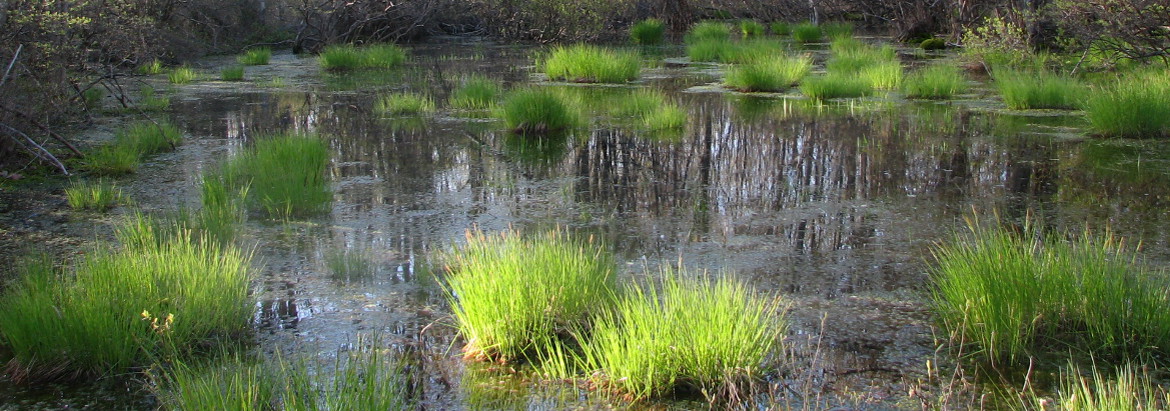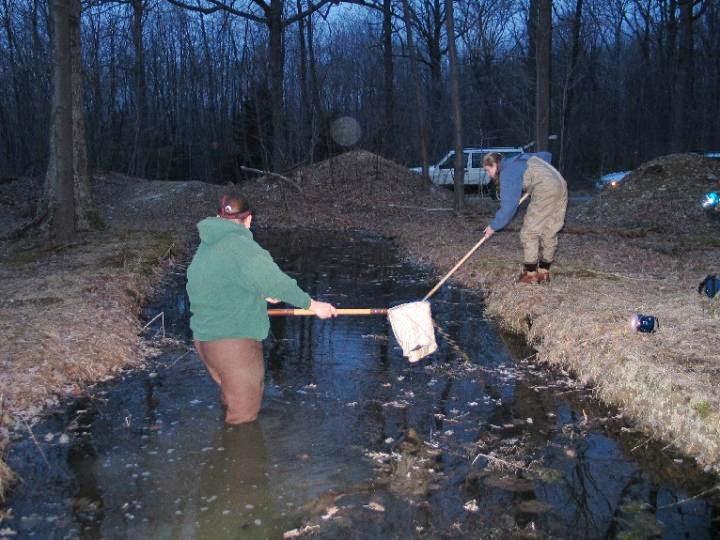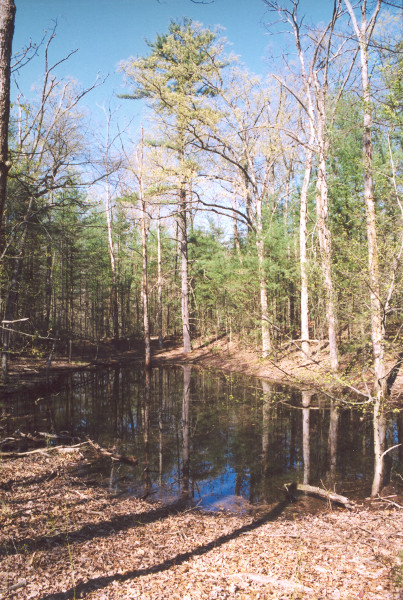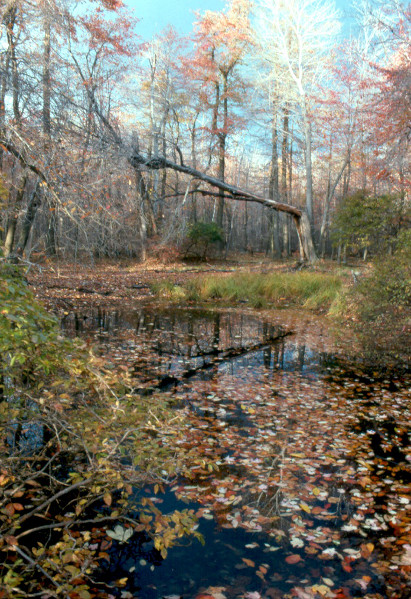 Vernal Pool Geology
Vernal Pool Geology
Vernal pools form in a variety of ways. The position of a vernal pool on the landscape can suggest its origin. A few common origins of vernal pools in Pennsylvania are discussed below.
Floodplains
Vernal pools are often formed in the floodplains of streams and rivers. During floods, a stream will
overflow its banks and enter the floodplain where the rushing high waters scour pockets in the floodplain.
Some of these pockets retain water well and become vernal pools. The natural meandering of a stream channel
across a floodplain over the years can also create vernal pool habitats in the form of oxbow wetlands.
Glaciers
Glaciers covered the northern part of Pennsylvania during the last ice age. A map of the glaciated areas of Pennsylvania is available through the DCNR Bureau of Topographic and Geologic survey website.
Glaciers created many isolated depressions, through the actions of ice melt, scour, and erosion that fill with precipitation and snowmelt.
Sag Ponds
Shallow depressions in limestone regions are called sag ponds. Sag ponds form in landscapes where easily
dissolved bedrock such as limestone is found underneath an impermeable soil layer derived from sandstone.
Over time, groundwater dissolves pockets and holes in the limestone. Eventually the surface soils 'sag' into the
depression underneath. Surface water gathers in the depression but the impermeable layer in the soil restricts
surface water infiltration and creates a perched water table.
Pingos
In the mountainous headwaters of periglacial areas, a common feature is the pingo. Pingos are formed by freezing
and thawing processes on moist slopes. The upper layers of soil thaw first and slowly slide over underlying frozen
soils. The resulting landscape appears to be scarred with crescent shaped wetlands. Open canopied pingos are often
full of marshy vegetation. Pingo vernal pools frequently have groundwater influences that extend their hydroperiod.
Human Activities
Some vernal pools are created deliberately by people who wish to create wildlife habitat or to replace
a seasonal wetland that was destroyed. Other pools are inadvertently created during human activities.
Artificially created pools can support vernal pool wildlife if the surrounding upland habitat is relatively
intact and the water quality of the artificial pool is adequate. Vernal pools can form in pits dug during
surface mining operations, borrow pits, roadside ditches, agricultural fields, and other artificially
created shallow depressions that hold water long enough to support seasonal pool wildlife.










